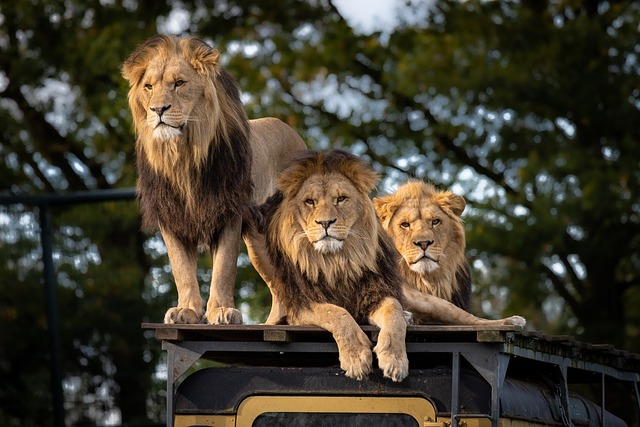Introduction
Nairobi National Park, often referred to as “The World’s Only Wildlife Capital,” is a remarkable conservation area located just outside Kenya’s bustling capital. Despite its proximity to urban life, the park serves as a vital sanctuary for a diverse range of wildlife, including lions, giraffes, zebras, rhinos, and over 400 bird species. One of the key aspects of its success is its commitment to eco-tourism and sustainability. Through responsible tourism, conservation efforts, and community involvement, the park ensures that its rich biodiversity is preserved for future generations. In this article, we will explore how eco-tourism and sustainability initiatives are shaping the future of Nairobi National Park, making it an essential destination for Nairobi National Park safari tours.
The Role of Eco-Tourism in Nairobi National Park
Eco-tourism is a form of sustainable travel that focuses on conserving the environment, respecting local cultures, and ensuring economic benefits for local communities. In Nairobi National Park, eco-tourism plays a crucial role in balancing wildlife conservation with responsible tourism practices.
1. Sustainable Safari Tours
Nairobi National Park safari tours have increasingly adopted sustainable practices, such as using eco-friendly vehicles, promoting low-impact tourism, and limiting the number of visitors per safari. These initiatives help reduce the environmental footprint while still providing an immersive wildlife experience.
2. Educational Wildlife Experiences
Tour operators and park authorities emphasize education as a key component of eco-tourism. Visitors are encouraged to learn about wildlife behavior, conservation challenges, and the importance of preserving natural habitats. By fostering awareness, eco-tourism contributes to a deeper appreciation of the park’s ecological significance.
3. Promoting Ethical Wildlife Encounters
Unlike commercialized zoos or unethical wildlife experiences, Nairobi National Park focuses on ethical safari encounters where animals roam freely in their natural habitats. There is a strict policy against activities that disrupt or exploit wildlife, ensuring that tourism remains a positive force for conservation.
Conservation Initiatives in Nairobi National Park
To maintain its status as a top wildlife destination, Nairobi National Park has implemented several conservation programs aimed at protecting endangered species and preserving ecosystems.
1. Rhino Conservation and Anti-Poaching Measures
Nairobi National Park is a critical breeding ground for black rhinos, one of Africa’s most endangered species. The Kenya Wildlife Service (KWS) has introduced anti-poaching units, surveillance technology, and community-led conservation initiatives to protect these majestic creatures from illegal hunting.
2. Habitat Restoration Projects
Urban expansion and infrastructure development have posed challenges to the park’s ecosystem. To counteract these pressures, conservationists and environmental groups engage in habitat restoration efforts, such as reforesting degraded areas, controlling invasive species, and improving water sources for wildlife.
3. Wildlife Corridors and Migration Routes
One of the significant sustainability challenges for Nairobi National Park is maintaining wildlife corridors that connect the park to other natural areas. Conservationists work to secure migration routes for animals, ensuring they can move freely between habitats without human interference.
Community Involvement and Sustainable Development
Sustainability is not just about protecting wildlife—it also involves empowering local communities to benefit from conservation efforts.
1. Eco-Tourism Job Opportunities
Many local residents are employed as guides, park rangers, and eco-lodge staff, providing them with sustainable livelihoods linked to conservation. Nairobi National Park safari tours contribute to job creation and skill development within nearby communities.
2. Community-Based Tourism Initiatives
Several tourism operators partner with Maasai and other local communities to offer cultural experiences alongside traditional safaris. This not only diversifies tourism offerings but also ensures that local traditions and heritage are respected and preserved.
3. Revenue Sharing for Conservation
A portion of the revenue generated from park entry fees and safari tours is reinvested into community development projects, including education, healthcare, and clean water initiatives. This creates a positive cycle where conservation benefits both people and wildlife.
Challenges and Future Prospects
Despite its successes, Nairobi National Park faces several sustainability challenges that require continuous efforts and innovation.
1. Urban Encroachment and Human-Wildlife Conflict
As Nairobi city expands, human settlements and infrastructure projects threaten the park’s boundaries. There is an ongoing need for strategic land-use planning and legal protections to prevent further encroachment.
2. Climate Change and Its Impact on Biodiversity
Changes in rainfall patterns, rising temperatures, and habitat loss due to climate change pose significant risks to the park’s ecosystem. Conservationists are exploring adaptive strategies, such as creating artificial water sources and enhancing habitat resilience.
3. Sustaining Eco-Tourism Amid Growing Demand
As Nairobi National Park gains popularity, managing the influx of tourists while maintaining ecological balance remains a challenge. Regulations on visitor numbers, promoting off-peak tourism, and further eco-friendly innovations will be essential for long-term sustainability.
Conclusion
Nairobi National Park stands as a beacon of successful eco-tourism and sustainability efforts. Through responsible tourism practices, conservation initiatives, and community engagement, the park continues to protect its incredible biodiversity while offering visitors unforgettable safari experiences. Whether you are a wildlife enthusiast, a conservation advocate, or simply seeking an ethical travel experience, Nairobi National Park safari tours provide an opportunity to witness the harmonious coexistence of nature and sustainable tourism. By supporting eco-friendly practices and respecting wildlife, visitors play a crucial role in ensuring that this unique park remains a thriving sanctuary for generations to come.


